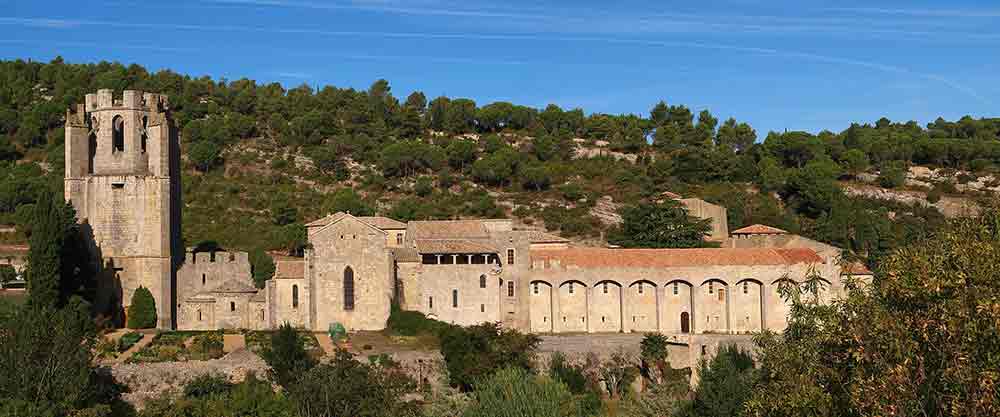
Between Carcassonne and Narbonne, Lagrasse is located in the Orbieu valley, in the heart of the Corbières massif.
The river Orbieu separates the abbey, erected on the left bank, from the village, stretched on the right bank and classified as one of the most beautiful villages in France.
The charter of "foundation" of the Benedictine abbey Sainte-Marie d'Orbieu dates back to the end of the 8th century, however an establishment must have existed before the Carolingian period.
The legend of Philomena, a 13th century manuscript, relates the legendary foundation of the abbey.
The monastery of Lagrasse quickly became prosperous, its possessions extending as far as Spain in the 9th and 10th centuries.
The political power of the abbey is mainly revealed during the crusade against the Albigensians.
Benedict d'Alignan, abbot of Lagrasse from 1224 to 1230, often acted as an intermediary between occupiers and occupied.
It was he who obtained the submission of Carcassonne to the King (1226).
Among the important abbots of Lagrasse, it is worth mentioning the reformist abbot Auger de Gogenx, from 1279 to 1309, to whom we owe most of the medieval constructions of the abbey.
After the troubles of the XIVth century, the monastery experienced a revival of artistic activity in the XVth century under the abbey of Pierre d'Abzac de la Douze.
The use of the commendation in 1502, then the attachment to the congregation of Saint-Maur in 1662, gave rise to a new intellectual development.
In the 18th century, the new abbey palace and its cloister were built under the impetus of another builder abbot, Armand Bazin de Bezons.
During the Revolution, the abbey was sold in two lots, a division that has continued to this day.
In 2020, the Abbey of Lagrasse was chosen by Stéphane Bern for the Heritage Lottery.
Lagrasse Abbey
11220 Lagrasse
Tel: 04 68 43 15 99



